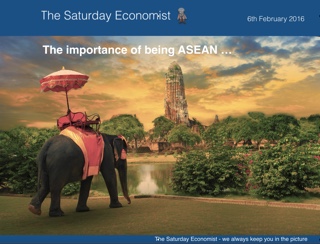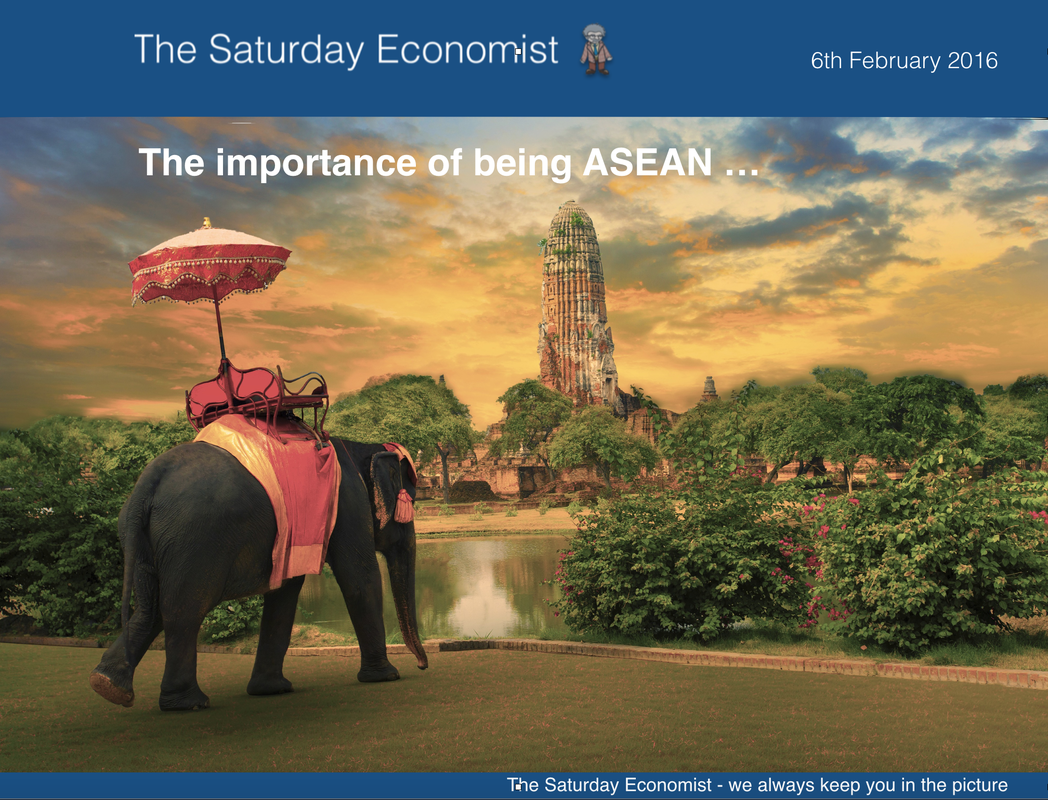 All eyes on the Bank of England this week as the Governor delivered the February Inflation report. Expectations of growth in 2016 have been lowered to 2.2% from 2.5% and forecasts for 2017 and 2018 have fallen to 2.3% and 2.4% respectively. Unemployment is expected to fall gradually and inflation is expected to return to target within two years! Sounds familiar? As for interest rates, the February MPC meeting voted 9-0 to keep rates on hold. Ian McCafferty the hawk returned to the dove perch. The Bank is taking a dismal view on a UK economy slow down and softer earnings data, despite the strength of the jobs market. As for rates, there is some speculation the Governor may extend his term in office from six to eight years, if only to ensure he can implement a rate rise at least once during tenure. The markets are ruling out a rate rise in 2016 with some speculation there will be no rate rise until late 2017. For the moment, Governor Carney is happy for this market conditioning to sustain the projections. Our expectations of a rate rise in the first four months of the year look to be way off track. As for the direction of rates, at least the Governor made it clear, the next move in rates will be up. Any though of negative rates off the table. Yep, it is bad enough to be stuck on Planet ZIRP, without being dragged in to the NIRP crevasse. What happened in the USA … Over in the US, the FED is teased by markets about a perceived premature rise in rates. The jobs data for January showed an increase in jobs growth of just 151,000 as the unemployment rate fell to 4.9%. Few now expect a further US March rate rise but Yellen has a vision which may see through any short term data noise. We still expect further US rate rises in the first four months of the year. The oil market will not lubricate at sub $50 oil. Once the oil price turns, as it surely will, or maybe already has, the growth and inflation outlook change swift and favour the hawks. Western eyes … looking in the wrong direction … Fears of the slow down in China abound despite projections of near 7% growth in 2016. Indian growth is expected to be over 7% in 2015. Why do we worry about a $10 trillion economy (China) growing at 7%, compared to a $7 trillion economy (China) growing at 10% some years ago. The dollar growth impact on the world is just the same. Last year China imported more oil and copper year than 2014. Filling the tanks and hoppers as world prices collapse. The Return of the Middle Kingdom … Western eyes are looking in the wrong direction as the “Return of the Middle Kingdom” transpires and the importance of being ASEAN is revealed. Last week ChemChina unveiled a $45 billion bid for Syngenta. Syngenta formed in 2000 by the merger of Novartis Agribusiness and Zeneca Agrochemicals is the world’s largest crop chemical producer. Feed the domestic population the China priority with more from less the plan. The deal follows the ChemChina acquisition of Pirelli tyres earlier this year for $7 billion. (That's more about cars than crops!) Overseas deals to date for Chinese companies have hit the $68 billion mark just five weeks into the year. The FDI programme is dominated by second and third phase action in [ATT] access to technology and [ATR] access to resource. The process is a relentless continuum. As for domestic infrastructure, China announced plans to build forty nuclear power stations over the next five years, whilst continuing to expand a high speed rail network that would stretch from Battersea to Beijing as the rail lies. Why do we talk of the “Return of the Middle Kingdom?” In the 10th and 12th century, China accounted tor over 20% of world population and wealth. It had the largest mercantile fleet in the world patrolling the South China Seas and beyond, with strong industrial capacity producing more steel than would be seen in the West until the UK Industrial revolution six hundred years later. Under the Ming dynasty, the economy accounted for almost 30% of world population and GDP. By 1820, China was the largest economy in the world accounting for 37% of world population and 33% of world wealth. Foreign invasion and the preposterous British Opium wars in the mid 19th century provided the set back to growth from which China is only now returning to a rightful place as the world’s leading economy in Middle Earth. The importance of being ASEAN … So what of growth prospects? China is the second largest economy in the world, yet struggles to get into the top 80 economies in the world in terms of GDP per capita. Were China to achieve Western levels of per capital growth, the economy would more than quadruple in size from current levels. China is not dependent on the West. Natural trading partners in an extended ASEAN group, from India to Australia, account for over 50% of world population yet just 30% of world GDP. The average growth rate of this trade group has been 5% over the last five years, expected to slow to over 4.5% over the next three years. The GDP per capita average is just 60% of the world norm, with lots of capacity for catch up growth to come. More significantly the current account surplus of the extended trading block is almost $700 billion per annum compared to a North American current account deficit of over $500 billion. The Renminbi is set to become the reserve currency in the ASEAN trading block, allowing nominal status for the dollar for now in the Asian Infrastructure Investment Bank. Why should we be too surprised if a decision has been made to dump the dollar and reduce exposure to the greenback in the foreign reserve coffers in the process. The arrogance of the West … There is an arrogance of empire in attitudes to the East which under estimates the extent of long term planning in China. It is important to distinguish between matters with the economy, capital reserves and currency and of course the stock market. There is evidence of bubble in the Shanghai composite of course. Too easily in the West we forget we paid the equivalent of $10,000 for a tulip bulb from Holland, or thousands of pounds for mis sold shares in the South Sea Bubble. Hopes for the “Japanese Wall of Money arriving in London, led to “Black Monday” and the stock market crash of 1987. Further US follies include the Dot com boom in 2000 and the derivatives crash in 2008. Too easily are were ready to lecture the “financial apprentices” of the East demanding clarity on policy in the process. So what happened to Sterling? Is the dollar rally over? Sterling moved up against the Dollar to $1.448 from $1.418 and moved down against the Euro to €1.299 from €1.309. The Euro moved up against the Dollar to €1.14 from €1.083. Oil Price Brent Crude closed at $34.29 from $34.33. The average price in February last year was $58.1. The deflationary impact continues with some strength. Markets, slipped - The Dow closed at 16,242 from 16,341. The FTSE closed at 5,863 from 6,083. We wtill think this is the GOBI desert on Planet ZIRP. A great opportunity to buy into Western stocks. Gilts - yields moved down. UK Ten year gilt yields were at 1.57 from 1.61. US Treasury yields moved to 1.87 from 1.95. You know it doesn't make sense. Gold closed at $1,154 ($1,116). That's all for this week. Don't miss Our What the Papers Say, morning review! Follow @jkaonline or download The Saturday Economist App! The easy way to keep in touch, we always keep you in the picture. John © 2016 The Saturday Economist by John Ashcroft and Company : Economics, Corporate Strategy and Social Media ... Experience worth sharing. The material is based upon information which we consider to be reliable but we do not represent that it is accurate or complete and it should not be relied upon as such. We accept no liability for errors, or omissions of opinion or fact. In particular, no reliance should be placed on the comments on trends in financial markets. The receipt of this email should not be construed as the giving of investment advice.
0 Comments
Leave a Reply. |
The Saturday EconomistAuthorJohn Ashcroft publishes the Saturday Economist. Join the mailing list for updates on the UK and World Economy. Archives
July 2024
Categories
All
|
| The Saturday Economist |
The material is based upon information which we consider to be reliable but we do not represent that it is accurate or complete and it should not be relied upon as such. We accept no liability for errors, or omissions of opinion or fact. In particular, no reliance should be placed on the comments on trends in financial markets. The presentation should not be construed as the giving of investment advice.
|
The Saturday Economist, weekly updates on the UK economy.
Sign Up Now! Stay Up To Date! | Privacy Policy | Terms and Conditions | |

 RSS Feed
RSS Feed